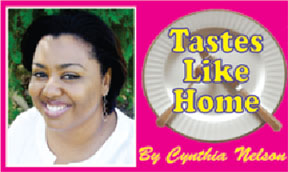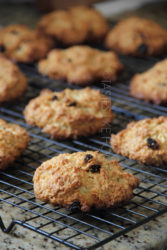Hi Everyone,
When you regularly engage in an activity, such as cooking, there are moments when the passion is removed from what you are doing. You assemble the ingredients and put them together in a perfunctory manner. You know the quantity of each ingredient required for the dish, the order in which they are to be put together and how long it should be cooked. If it is a dish with which you are very familiar, then, as we say, you can make it blindfolded, or, with one hand behind your back. While it is not always possible to slow down long enough to really engage with the ingredients, the task at hand, or to contemplate where our mind takes us, it is worthwhile to make the effort to slow down and really engage, as often as we can.
 The other day I was watching a chef series on Netflix and became enraptured by an episode with the chef featured talking about the song of fire in his grandmother’s kitchen as he simultaneously placed two large baigan/boulanger/eggplant on a grate over a crackling wood fire. He stood back and stared at the fire as the flames licked and charred the eggplant. For a moment, it seemed as if he was transported back to his grandmother’s kitchen. The camera seemed to intrude on a private moment of reflection. It was a powerful scene and there would be many more throughout the episode. I am a journalist so I know and understand the power of selecting the right image/scene, use of light, music, sound, and the painting of pictures with words to tell a story. The episode was masterfully done and the story has stayed with me.
The other day I was watching a chef series on Netflix and became enraptured by an episode with the chef featured talking about the song of fire in his grandmother’s kitchen as he simultaneously placed two large baigan/boulanger/eggplant on a grate over a crackling wood fire. He stood back and stared at the fire as the flames licked and charred the eggplant. For a moment, it seemed as if he was transported back to his grandmother’s kitchen. The camera seemed to intrude on a private moment of reflection. It was a powerful scene and there would be many more throughout the episode. I am a journalist so I know and understand the power of selecting the right image/scene, use of light, music, sound, and the painting of pictures with words to tell a story. The episode was masterfully done and the story has stayed with me.

With the new academic year just started, I decided to do some baking so that I could have a snack with tea in the afternoon or evening. I opted to make coconut buns. As the hammer connected with the coconut, cracking the shell open and spilling the water all over my hand holding the coconut, it was as if I had been drawn into my own fire and contemplation, like the chef in the TV show. Memories of my mom’s weekend baking of bread, cassava pone and coconut buns, to be eaten warm with her homemade, from scratch, bark-brewed mauby gave me pause. Like many other parents, my mom baked on the weekend so that there was bread for toast and sandwiches at the start of each school week, snacks for when we’d come home from school in the afternoons… Was it a coincidence that I felt like baking just as the school year starts? And making coconut buns too? While the memories are little heart treasures, it was the chef’s (from the Netflix series) pace and pondering of ingredients and the act of cooking that stayed with me through the process of making the buns.
Coconut buns I can make blindfolded, hand behind my back, so I decided to deliberately step back from this being a task of assembling and putting together the ingredients to really engaging in the activity. Slowing down.
I sat down to grate the coconut using what we call the Indian grater or sit-down grater. With one half of the cracked coconut cupped in my hands and held askew, I began to grate the coconut. 1, 2, 3, 4, movements of the coconut over the iron-teeth scraper, slight rotation of the coconut; 1, 2, 3, 4 movements of the coconut again over the scraper. This rhythmic action – 4-count scraping movement and rotation of the coconut – would continue until the flesh was scraped away from the hard outer shell. As I grated the coconut I wondered – how did I learn to grate coconut like this? I must have seen my mom, aunts, or cousins do it so perhaps that is how I learnt. This led me to think about how I learn in general. Am I a visual learner? Do I learn by doing? By reading, or a combination of both? I think perhaps both.
The white flesh of the coconut formed a cone-like mound as I grated. In between the white flesh were little specks of brown from the outer skin of the coconut but that was fine, it adds fiber.
With the coconut grated and set aside, it was time prep the other ingredients. I put the raisins in a bowl and added a couple splashes of rum to plump them up. Next I moved on to cutting the cold yellow butter into the flour. As I worked the pastry blender with my hand, I recalled that this was one of the tasks my mother would assign to me, or my sister Pat, when she was making buns. There was no pastry blender though; we used our fingers to rub the butter into the flour. Paying attention and engaging with what I was doing, I noticed how the white flour changed colour as it blended with the butter turning cream-coloured, almost like the colour of seashells we’d find at the seawalls when we were children. The uniform colour of the flour was also an indication that that stage of the recipe was completed.
The aroma of the homemade ground cinnamon tickled my nose as I inhaled deeply. I couldn’t be bothered to measure the nutmeg as I grated; I was caught up in the sound of it grazing against the fine teeth of a hand grater.
Butter-blended flour, tender coconut, warm spices, golden brown sugar crystals and rum-swollen raisins were bound together in a sticky dough by eggs, milk and vanilla essence. Scooped and put onto baking pans and transferred to a hot oven, I had done all I could do. As I washed the bowls, spoons and other implements used, I felt as if I had just done something for myself. Not for the column, not for an article, not for my blog, not to test a recipe, not as a favour to a friend or one of my tasters. I did it for me, at my own pace, because I wanted to. The fact that it is the subject of this column is purely coincidental.
Out of the oven and the aroma still lingering in the air, I wait for the buns to cool. There’s no mauby. I could make tea but I opt to eat the buns just as is – a little warm, just like I would when growing up. The outside is crusty but the inside is tender. The raisins on the crust seem to peep out of the bun, the ones inside warm and soft. I finish one bun and reach for another but then I stop. These buns are to be enjoyed slowly, one at a time, over a period of time. Each bite, a contemplation.
Cynthia








